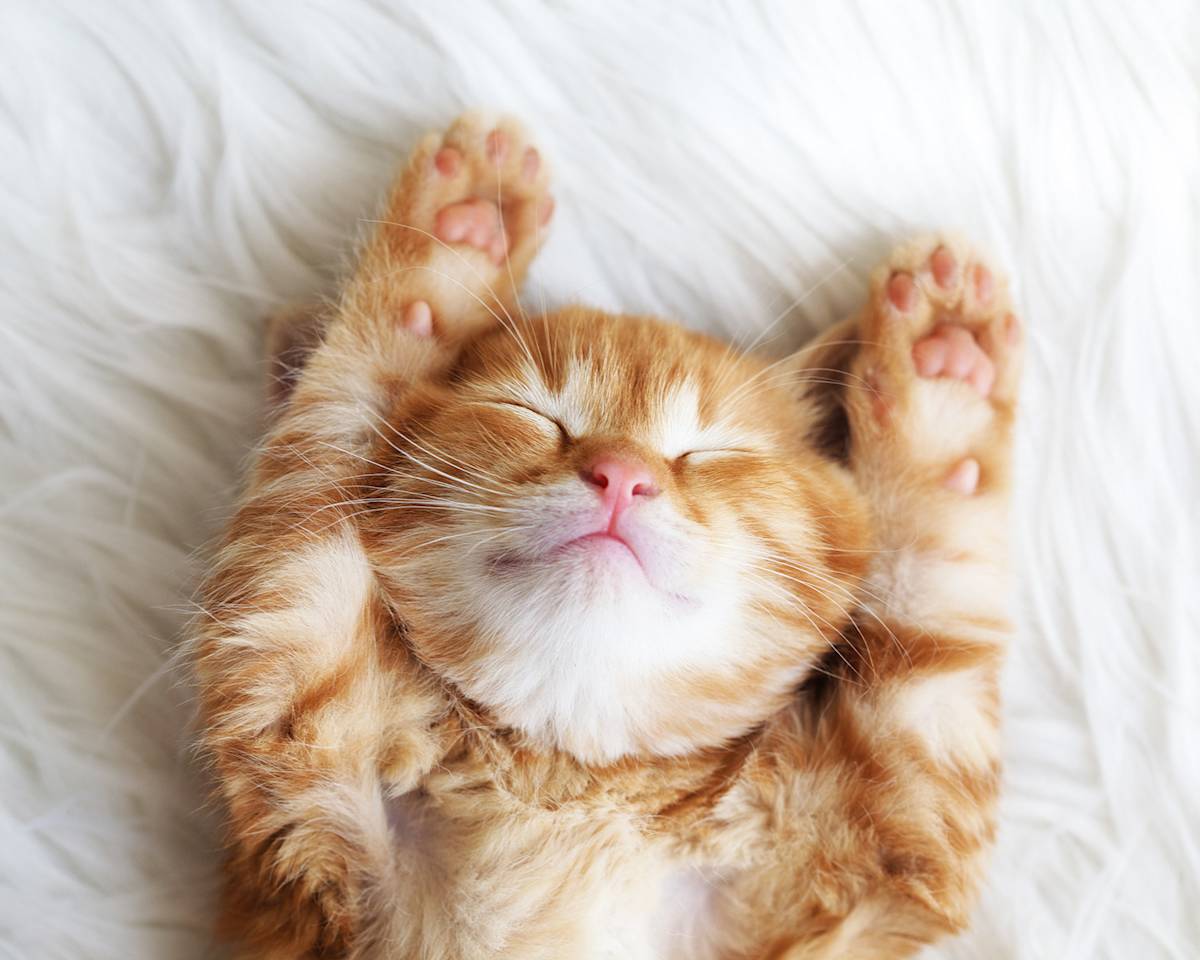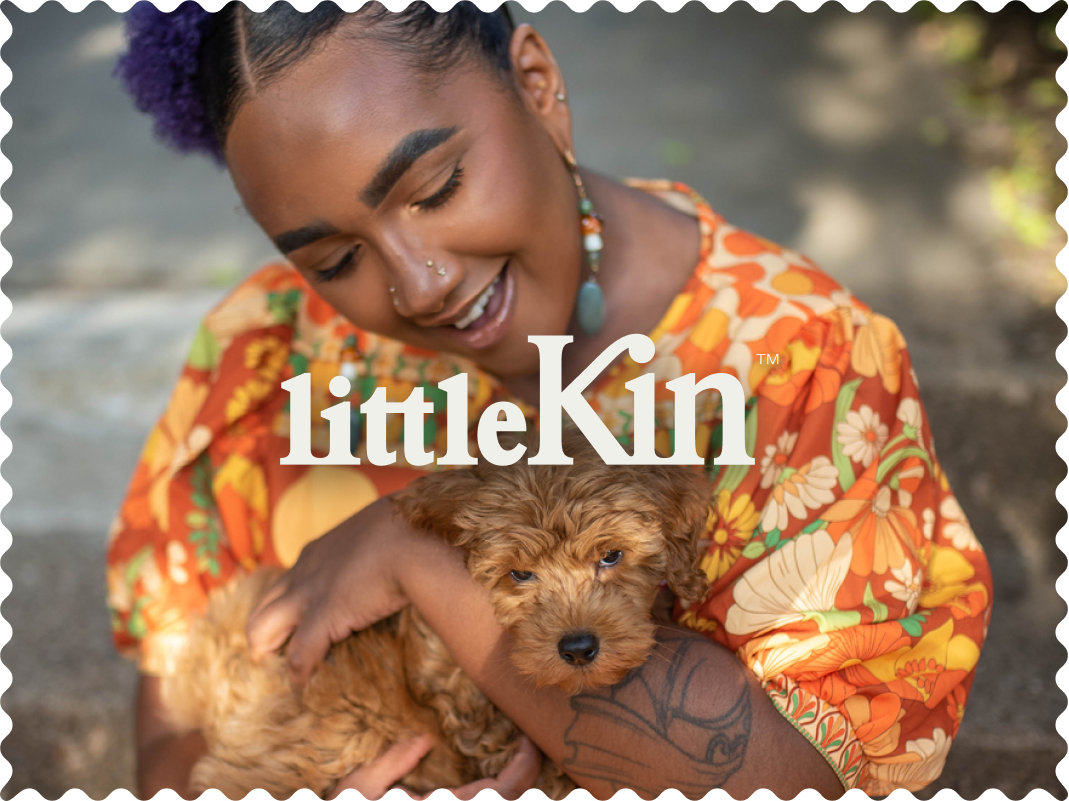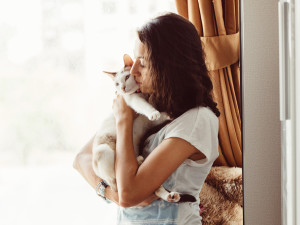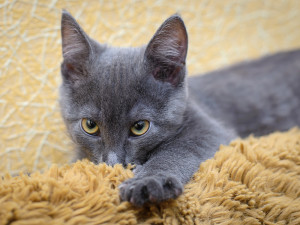The Science Behind Why Your Cat is The Cutest
Cats are seriously cute, and there’s a science behind it

Share Article
Is there anything cuter than a cat? Whether it’s a fresh-faced kitten or a kindly old senior cat, we just can’t seem to resist them. Cute cats are everywhere, from your TikTok FYP to heartwarming news stories (and who could forget the hold they had on the internet in the 2000s?), but what is it about cats that makes them so adorable?
As we’ll find out, there’s actually some science behind it. Yep, science itself confirms that cats are cute – and here’s why.
What makes cats so irresistibly cute?
Most people find babies – human infants, kittens, puppies, ducklings, you name it – cute. It’s a trait that’s evolved in order to ensure their survival, because they rely on us. They’re quite helpless otherwise.
When we have pet cats, we function as sort of surrogate parents for them, and they retain many of their youthful characteristics. We’re hardwired to want to take care of them as a result, and it’s hardly surprising that there are almost 11 million of themopens in new tab in homes across the UK.
The science of feline baby faces
Baby animals like kittens also have the facial features baby humans have that we find cute, like large heads and eyes. While they didn’t evolve specifically to be cute, as such, they may have evolved to develop features that activate our caretaking instincts as a result of domestication. In many ways, cats haven’t evolved a lot since domestication, but we know from a 2022 studyopens in new tab that pet cats have more of a ‘baby face’ than wildcats, with shorter noses being one example of their evolution.
Some breeds, like Persians, have been bred in such a wayopens in new tab that they develop more baby-like or ‘cute’ features, too, including soft fur, a brachycephalic head and juvenile facial features.
The psychology behind our love of cute cats
“Humans are drawn to a cat’s baby-like features – their big eyes, small noses, rounded ears and cheeks and soft fur are all characteristics that attract us to them, activating an innate desire to look after and nurture them like a baby,” explains Dr Anna Foreman, in-house vet at Everypaw Pet Insuranceopens in new tab.
This is the baby schema, or Kindchenschema, which was first proposed by the ethologist Konrad Lorenz in 1971. It’s that set of facial and body features that make something or someone cute and activate our motivation to care for them.
In a 2009 studyopens in new tab, it was found that the cuteness of an infant (as perceived by an individual participating in the research) corresponded to the individual’s motivation to care for them. Not only that, but faces with more baby schema features prompted more action in an area of the brain central to reward and motivation, while babies judged to be cuter were more likely to be adopted, too.
It’s not difficult to see how this might also be the same where cats are concerned. The cuter a cat is, the more our motivation to care for them increases. But it’s not just the physical baby schema features, of course. Seeing our cats exhibiting cute behaviours triggers the same feelings.
How cat behaviour enhances their appeal
Maybe you think your cat’s at their cutest when they’re playing with a ball or a spring, when they’re kneading their paws, or when they’re curling up in the smallest, most cosy places.
We find these feline behaviour traits, from purring and kneading to playing, adorable when kittens display them, as well as when it's older cats. We know that younger cats are more likely to display playful behaviour, so this is an example of that behavioural neoteny. In particular, a huge 83 percent of cats aged four or under show predatory behaviour through play, as opposed to 77 percent of cats aged between 5–12 and 61 percent of those cats over 12, per PDSA’s Paw Report 2024opens in new tab.
Let’s face it, there’s nothing cuter than your cat pretending to hunt their toy or lying next to you ‘making biscuits’.
The human-cat bond: why we’re hardwired to care
Humans are biologically hardwired to find babies cute so that we protect them – they’re pretty defenceless otherwise. So, it makes sense that domesticated animals – who need care – share similar traits. When humans domesticated animals, we bred them for these desirable traits over time, too.
In cat psychology, there exists the reward-seeking system. It motivates your cat to do things that they enjoy or that keep them alive – whether hunting for food or getting someone else to meet all their needs for them. When we find cats cute, and then feel the desire to look after them, they’re getting their needs met by us.
Think about how having a pet has changed, too. Many people call themselves ‘pet parents’ rather than owners, and view their pets as their children and firmly as part of the family. A study by Galeopens in new tab found that 44 percent of millennials see their pets as practice for children.
From kittens to adult cats: cuteness across life stages
If you were to imagine a cute cat in your mind, there’s a good chance you’ll envisage a kitten. That’s understandable; kitten faces are incredibly cute, for reasons we’ve already explored.
Kittens look different from adult cats, in much the same way as a human will look different as an infant, a teenager, and a middle-aged person. You’ll probably notice that adult cats’ heads aren’t as big in proportion to the rest of their body, while their eyes may look smaller and their nose and mouth may look bigger.
But because they’ve evolved to possess the features we find cute even as adults, we still find adult cats very cute. Some people may not perceive them to be as cute as kittens, but there are plenty who’ll disagree.
It’s also worth noting that cats can mature at different points. Larger cats, such as Maine Coons, may not be fully mature until they’re a few years old, whereas the Singapura, one of the smallest breeds, may mature before they’re even a year old.
When adult cats retain baby-like features
Adult cats retain a lot of the features of the baby schema, often having large eyes and ears, a shortened muzzle, and a rounded forehead into adulthood. We’ve mentioned Persian cats, but Dr Foreman also highlights Scottish Folds – and Munchkins are another.
Neoteny – when the development of the body is delayed or slowed – can be seen in cats, in both their physical features but also some of their behaviours, like kneading and meowing. Because they live in an extended kittenhood with us as their surrogate parents, they’re in an environment where they’re able to do so.
Kneading, for example, is an instinctive feline behaviour that stems from kittenhood, when doing so would stimulate milk from their mother. As adults, they’ll knead to give themselves feelings of comfort, or to show affection to their humans.
In terms of meowing, Dr Foreman explains, “Cats have developed this pitch of vocalisation specifically to communicate with humans since they have become pets. It mimics a baby’s cry and desire for attention.”
In turn, we behave like their parents. When we pet them, or we put our faces close to theirs, we’re essentially mimicking what mother cats do with their kittens. Cats only perform these neotenous behaviours and vocalisations to those they trust, so it shows love and affection.
The cultural impact of cute cats in the UK
With almost 11 million cats in the UK, you could argue that we’re truly a nation of cat lovers. Domestic shorthairs are very common, as well as breeds including British Shorthairs, Ragdolls, Bengals, Persians and Maine Coons.
It’s hard to avoid cats online, from funny videos on YouTube to heartwarming TikTok clips, and there’s always a new social media trend where people show their cats doing something cute, silly or fun.
British cats in popular culture
Larry the Cat, Chief Mouser to the Cabinet Office, has served under six different Prime Ministers and became an internet sensation. While James Bowen’s late cat Bob found international fame following the publication of Bowen’s memoir A Street Cat Named Bobopens in new tab. Cat-loving celebrities like Ed Sheeran, Dermot O’Leary and Ricky Gervais have frequently shared photos of their own felines, too.
Cats Protection’s National Cat Awardsopens in new tab, set to take place this year on September 24 in London, show just how important cats are to us; as did data from pet retailer Jolleysopens in new tab, which revealed in May that transactions on cat products are almost a third higher than on dog products.
The economics of cute: UK pet industry insights
Maybe we’re tempted to spend more money on our cats because of how cute they are. The average cost of owning a catopens in new tab in the UK is £1,500 a year – we spend £8 billion on our cats collectively – and this includes everything from toys and feline furniture to regular outgoings like food and insurance. But, this being an average, there are plenty of cat parents who spend quite a bit more.
Many pet parents go beyond getting the basics, paying more for products they find cute. Ever felt like you just ‘had’ to buy that cat tree that resembles a cactus, or that cat bed that looks like a swanky sofa? TikTok, in particular, is a goldmine of cute cat products.
Our cats are so cute that we’re looking at more sustainable products, too. Have you ever bought tofu cat litter or a water fountain to help prevent water waste? If so, you’re in good company.
The bottom line: the enduring appeal of feline cuteness
Kittens and adult cats alike have evolved to be cute, and we’re programmed to want to take care of them. Though kittens are more obviously cute, adult cats get plenty of love too.
As a result, it sounds as though our cats have got quite a good deal. But because it’s us who get so much happiness and laughter from them, maybe it’s us who benefit the most. Go and observe your own cat today and see if you can pinpoint any features that you think we’re hardwired to find absolutely irresistible.
References
Glocker, M.L., Langleben, D.D., Ruparel, K., Loughead, J.W., Gur, R.C. and Sachser, N. (2009). Baby Schema in Infant Faces Induces Cuteness Perception and Motivation for Caretaking in Adultsopens in new tab. Ethology, 115(3), pp.257–263.
Salonen, M., Vapalahti, K., Tiira, K., Mäki-Tanila, A. and Lohi, H. (2019). Breed differences of heritable behaviour traits in catsopens in new tab. Scientific Reports, [online].
CATS Report 2023 | CATS Reportopens in new tab | Cats Protection. [online]
The cost of owning a catopens in new tab | Battersea. [online]
Tavernier, C., Ahmed, S., Houpt, K.A. and Yeon, S.C. (2020). Feline vocal communication. Journal of Veterinary Scienceopens in new tab, [online] 21(1).
King, S. (2025). Jollyes: Could cats overtake dogs as the UK’s most popular pet?opens in new tab [online] OvertheCounter.
PDSA Animal Wellbeing Reportopens in new tab (2024). [online]
Raphael, R. (2018). Inside the Mind of the Millennial Pet Owneropens in new tab | QuestionPro. [online]

Adam England
Adam England is a lifestyle and culture journalist who has written for publications including PetsRadar, Verywell Mind, People and Healthline. When he’s not writing, he might be visiting his parents’ Golden Retriever, looking up cats for adoption, or getting into arguments over music.
Related articles
![A man in a blue t-shirt holding a super cute puppy against an orange background]()
Baby Face: The Allure of Cute Dogs
Kindchenschema might explain why pet parents anthropomorphise their cuddly companions
![Young woman hugging her cat]()
Why Do Cats Purr?
Surprise: it doesn’t always mean they’re happy
![grey kitten kneading blanket]()
Why Is My Cat So Kneady?
A cat behaviourist says ‘making biscuits’ could mean your cat thinks you’re their mum...
![a man and a woman with tattoos huge a red and white dog]()
These People Completed Their Families With Pets Instead of Babies (and Don’t Regret a Thing)
“You realise that they can’t do anything without you. They need you. But then you realise you need them just as much”





